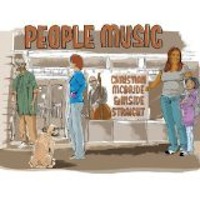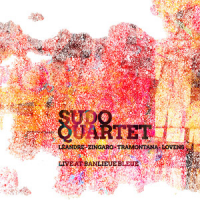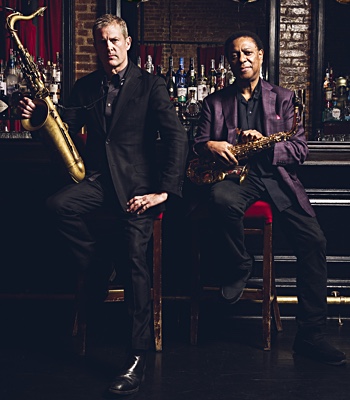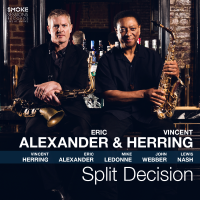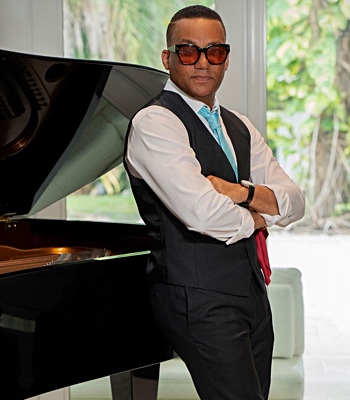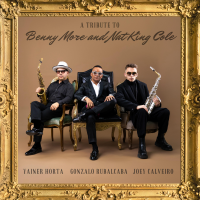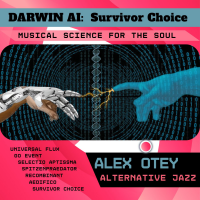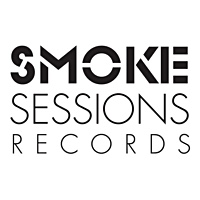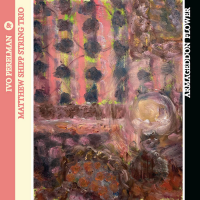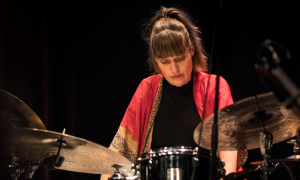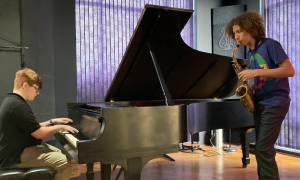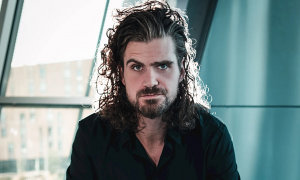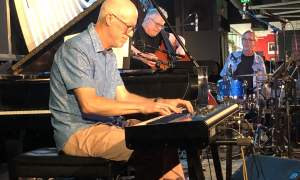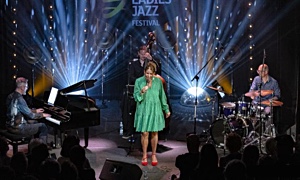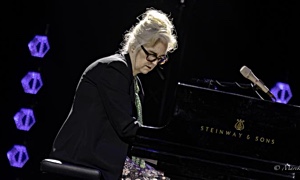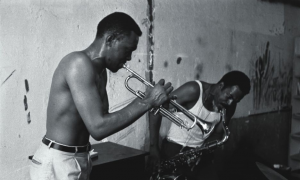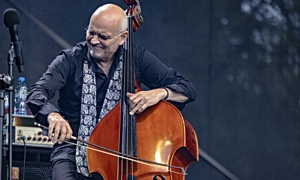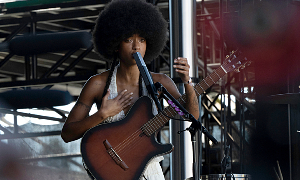Home » Jazz Articles » Interview » Arve Henriksen: The Trumpet is My Pen
Arve Henriksen: The Trumpet is My Pen

Supersilent's intelligent and uncompromising music is happening in the now. The band thrives on a "no rehearsals" motto, nor does it create fixed plans or strategies. Rather, the trio explores and convenes without a safety net, creating spontaneous improvisations that have included everything under the sun, from ambient textures to brutal and vicious noise. In 2010, at the renowned Punkt Festival in Kristiansand, Norway, the band was approached by legendary bassist/keyboardist of Led Zeppelin fame, John Paul Jones—an initially non-performing guest of the festival who, having his bass and a laptop on-hand, asked the festival if he could perhaps open with a 15-minute improve for one of the existing acts. Placed in the opening slot to Supersilent's set, it was during soundcheck that he approached the Norwegian trio, asking if he could play with them, and they were more than happy to agree.
Jones' solo career, including production and collaborative projects, has long demonstrated his experimental and avant-garde interests, and following what turned out to be one of Punkt's highlights for that year, Supersilent and Jones reunited for a subsequent tour of England in 2012, which proved to be a perfect match for the challenge-seeking musicians.
Henriksen's sound can also be encountered on one of many projects he took part in, like British avant-songsmith David Sylvian's Nine Horses project, pianist Christian Wallumrod's Ensemble, Food, producers (and Punkt co-Artistic Directors) Jan Bang and Erik Honore's many projects, to name but a few.
A musician trying to redefine the sound of the trumpet—as well as other instruments in his arsenal, including electronics, voice and drums—make good music and have some fun.
All About Jazz: What was the impetus behind the formation of Supersilent?
Arve Henriksen:The beginning of the whole concept for Supersilent began in 1988 or 1989, when Jarle, the drummer, Storløkken, the keyboard player, and I met in Trondheim. We met while we were studying together, and we also met Helge. He was also studying in Trondheim, but he was studying at the art school. We knew each other during our studies at Trondheim, but we never got together to play. Then, in 1997, we met at the festival in Bergen, on the western coast of Norway. The jazz festival is called NattJazz and they invited us, our jazz band, which was a trio called Veslefrekk [Henriksen, Storløkken and Vespestad]. This trio met at the festival and at the same time Rune Kristoffersen, the founder of Rune Grammofon. He wanted us to be the first group to record for his label. The trio was a sort of free-improvised unit with all kinds of music styles on its repertoire.
We wanted to play all kinds of music—contemporary, jazz, standards, ECM-styled kind of sounds, music inspired by Norwegian folk music, and world music. We were inspired by any kind of styles. That was our way of defining free improvised music. We also played some compositions that we made along the way. It was a melting pot for all kinds of things we enjoyed listening to at the time, and when Helge came into the group he brought his experiences with Deathprod. He brought darker, more hardcore sounds. And the combination of these elements—the freer improvised setting that the trio had and Helge—gradually became this free improvised concept. That eventually made Supersilent's sound, if you like. It was based on meeting up to play and to see what would happen, and things happened along the way and we managed to record many different albums. In a way, the records are sort of in the same sound garden.
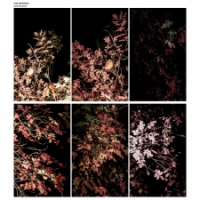 AAJ: How do you approach music-making in this band?
AAJ: How do you approach music-making in this band?AH: There is a Supersilent concept; it's free- improvised, but we know that from time to time it can sound sort of the same. We never decide what to play when we go onstage. We just have a nice long sound check, gradually tune into something and then we just follow the spontaneous artistry that comes up, trying to follow that river and go with the flow. We don't decide too much. But of course, I remember an occasion in 2002/3, after we had some recordings and gigs, that we came to a point where we felt we got a little bit stuck. There were some gigs that were sort of difficult to make things flow. But we struggled through that and continued for some time with Ståle, and four years ago Jarle left the band. In 2009, we had this situation where Jarle gradually faded out of the idea of the group's concept, as he wanted to play more defined music, like Farmers Market, which he loves. He worked [and continues to work] a lot with Tord Gustavsen, the pianist. He wanted to play compositions, pre- defined music, and I really admire his decision, his choice, at the time, to go into another direction. For me, Ståle and Helge, Supersilent's concept will always be this sort of a meeting point, a laboratory of sounds, a place to meet and do things we want to do as opposite of thinking too much and spending so much time rehearsing songs.
It is a free space for us, where we try to be free and open to check out different things which, for us, are new. Therefore, it's been a very important place for us to be. It's really a place where we get to do something that we didn't get a chance to do in other bands— a free area for us to have fun and play. We were breaking barriers and this approach has continued for all these years. We just want to make music without wanting to make a special style. That is why, after awhile, Helge started playing guitar in the group. In 2007, I began using more drums and now I'm sort of a drummer in that group. It is fun to be 44 years old and to be able to challenge myself by playing the drums in that type of context. It's a place for us to be free, to check out new possibilities. Just go with the flow. These are the basics of Supersilent, the concept where we play music and invite musicians that we feel are connected to that way and that type of thinking.
AAJ: How do you see the band's output?

AH: Along the way, we did a lot of CDs with different timbres, different colors to them. The first one was a triple box. The fourth one consists of short abstract electronic pieces while the fifth one consists of live recordings in churches. To me, the sixth is a very strong album. It is very precise and it sounds very contemporary. The seventh album was a DVD, which was very interesting to do, as it was a one-off event for us. The eight album was the last one we did with Jarle and it was a very interesting collaboration. The ninth consisted of playing organs with electronics and the tenth album was recorded in Rainbow Studio and it sounds like improvised chamber music. The eleventh was a vinyl release consisting of studio sessions of earlier works and the twelfth will be released this year. It will be a studio based album done by the trio. That is a long, long journey that has produced all kinds of material that is based on free attitude towards music. We still want to be able to challenge ourselves because Supersilent has been with us for so many years and we still hope we can challenge ourselves with interesting music because over the years we toured a lot while some years we just played 3 shows but it was always important to us to check out interesting things.
AAJ: Why has the band collaborated with so few people during its existence?
AH: We have been collaborating with very few people because we are very restricted in inviting other people into the concept. We did a concert with Christian Wallumrod, who played one concert with us. We have done quite a few gigs with guitarist Stian Westerhus. He is a fantastic guitarist and is very compatible with Supersilent's concept. He will be playing a lot of gigs this year and he will be an equal band member for some gigs. We have also been collaborating with John Paul Jones. This collaboration happened by coincidence. He was at the Punkt festival in Norway and we just asked him if he would like to join us. He played with us and we felt it was great fun and we did several concerts and in November we did a tour in England and probably we will be doing some shows together later this year. But that is also based on this free improvised or free attitude toward music. He has brought a system of using electronics, something that he bought long time ago and is called "Kyma." It's a very advanced electronic program which can do anything that you can possibly think of. So he has been working with this electronic device with Supersilent and this has led Helge, Stale and myself to buy this advanced electronic system. Every once in awhile we have a workshop within the band and we try to go further with electronics. That is why I see the band as a sound laboratorium, a rehearsal in a test laboratory for various musical ideas. This is the concept of Supersilent—inviting special musicians which we feel are bringing new elements for us to chew choose from and we bring people to challenge us. I think we will continue as long as we have that special type of attitude and collaborational environment.
AAJ: Will the concerts with John Paul Jones be released as a recording at some point in the future?
AH: We haven't discussed that yet. The material from the tour in November was not that well recorded. The idea to go into the studio with him is very interesting. It is too early to say. We will see. Maybe it is a good idea. There are some bootlegs from the tour but I haven't checked them. If the recordings are good, it will be fun to hear them. It was great fun touring in UK. It was a pity Helge was sick for the first three shows and he couldn't play, but he played on the last two concerts.
AAJ: How has playing with Supersilent influenced your attitude towards music and sound?
AH: Ever since we started in Trondheim as a trio many years ago, for me, this has become a natural way to work with music. This is the preferred way for me to work with music. I've been working with many different concepts along the way. The more conventional way of having some written music, rehearsing, and then going on a tour, going back to the studio to record—that's a very nice of doing it. I won't say it is old-fashioned, but it is a typical way of doing music and I think Supersilent has kept me fresh, alert and curious. Very often one can get stuck in concepts or in one genre like jazz. Now, jazz as music is fantastic, but the basis of this music is improvisation, and if we look at the fashions, or the music of the 30s, 40s and 50s, there have been constant changes of styles coming up.

All of that, I think, is based on fashion and technology, which has gradually made things happen. In the 70s, when the electric piano came along, it made things more interesting. The appearance of synthesizers has created new possibilities. And now musicians use laptops on stage. All these elements of technology, styles and musicians, like Miles Davis and Coltrane, and the old guys which have influenced countless of other musicians like myself and the younger generations. For me, Supersilent has been my school. It has kept me very alert. The musicians in this band are very eager and very upfront musically as well upfront in many other bands. Ståle is playing with different bands with different concepts and he is one of Norwegian musicians that are really sort of searching for new sounds. The same with Helge or Stian Westerhus, who is also great. You may know him with his band Puma and we last year played together in Holland with Jan Bang. He showed a new side that I have never seen before—some sort of chamber music, a delicate way of playing. You know, all of these musicians around us are influenced by our way of making music. I think the attitude which is one of the basics of Supersilent is very important to me when I make music. But Supersilent is the way I really enjoy making music and I want to do my own concepts. I want to have that childish approach to making sounds. I have twins (beside my older children) and they run around and they improvise when they play. They run around the house, do various things and they are improvising all day long. They are having fun just by exploring. Curiosity is very inspiring for me as a musician so I learn a lot from children. I also worked in a kinder garden for one year I was really astonished just by watching the kids play because they run around and find interesting things to do.
AAJ: How strictly do you separate improvising and composing in your work?
AH: To me it's the same thing. I try to improvise and compose every day. I have my computer and my studio up and running. I have a room in the house where I can go and record, which means I have things ready. I can record immediately and I try to do that as often as possible. Some days I can do it for many hours, and I try to do a recording every day so I feel there is a momentum going. In that way, I feel music is a part of my daily routine. But it doesn't have to be a long improvisation or a recorded sequence. I can record an idea or a sound—something. I never compose conventionally; you'll never see me sitting with a pen in my hand and writing notes and musical scores. I don't do that. The trumpet is my pen. I play, I record, I listen. I edit the material, editing away some tones; I can add some stuff; I can compose by using my trumpets, keyboards or any other sound equipment. To me it's the same thing, improvisation and composition. It is my way of dealing with it. It is based on the way I find it interesting to work.
This is an enormous topic to talk about. Some conventional composers like improvisation and some other conventional composers I know are not so fond about what I do. They think it is some sort of a higher level of composing when sitting with a pen and write scores. But to me, the output is the same: that's audio sound. You can't hear the music just by reading it, at least I can't do it. To me, you need musicians to play the instruments and then you've got to get back to the audio concept anyway. So, if you write it down or you play it by improvisation, doing editing, or composing—you can compose something on the instrument which is fixed and defined as a piece of music. It can be improvised in the beginning and then gradually built upon, as I did with the Cartography album. Some of the songs there are improvised sequences in the studio or in live setting, but they have all become songs because I can repeat them. I can do variations. I can do "Poverty and Its Opposites." I can play that as a melody now, but then it was improvised. Gradually it became a fixed composition, if you want.
 AAJ: What made you want to release a vinyl box set that encompasses your career to date?
AAJ: What made you want to release a vinyl box set that encompasses your career to date?AH: I had this idea of a box set for awhile, but when I released my first album, Sakuteiki, I had the idea of releasing that album also on vinyl but it never happened. Then I released Chiaroscuro, and I still had the idea of releasing vinyl, it never happened. Then I forgot the idea for many years, and when I worked on Cartography, with producers Jan Bang and Erik Honoré, I decided I would make a vinyl box that would have all my albums on vinyl. It took us several years, from 2008 until now, to make this happen. It was a long journey and I'm very happy about it. The reason why I wanted to do that was because I grew up with vinyl as the only thing to hear. Vinyl was, for me, an adventure. It was about opening up the the cover, pulling out the record and putting it on the record player, sitting and listening to one side at a time, and then turning the record over to the next side. The design of the cover was really important to me. It was magic to me. As a whole, it was some sort of a package with journeys that I could make with my fantasy. I had plenty of time to sit and listen to music. We also had cassettes then, but even with them you could listen to one side at the time.
When I was listening to music as a kid I was very focused. When the CD player was introduced I gradually started to scan. I would be listening to the first part of it and then click the skip button and go directly to the next song. You could scan through music. Gradually I discovered that I have become impatient. I could only listen to one song at a time. Of course you can do that with the vinyl by taking the needle from song to song, but you risked destroying the needle and the record [laughing]. Now there are downloads as well as a new way of scanning with all these options and gear. There are many, many, layers here and there are many good things about what is coming up. You can get all kinds of music that is available to you with Spotify and all those streaming services. That is amazing, as you get millions of song, but I don't think we will become better in listening by having this possibility. To me, it has become a situation which is more stressful; I have problems with focusing when I'm listening to music because I can scan into a million of songs. I can go through things faster and that is very stressful.
Listening to music has become very stressful. I don't think I have become a better listener as these new streaming services have occurred. To me, this vinyl box was a way of putting things into focus—good quality music, as the MP3 format is not good. You can hear what is happening, but the sound quality is really bad when we can have FLAC or WAV files. This makes me question why we have to spend so much time in the studio making good quality music or recording when people listen to very low quality sound formats. I think that is stupid, because we spend large amounts of money on expensive studios.
If you want to record for ECM then you go to Rainbow Studios [in Oslo], which costs a fortune. And why do we want to do that when we listen to MP3s? We can make lo-fi recordings which are very cheap. To me, this box is a signal to people to listen to good quality recordings for good quality music. I think that the vinyl is a fantastic medium to present music. It has a character. The box set has liner notes written by All About Jazz editor John Kelman and BBC radio host Fiona Talkington. I'm very happy to do this, I feel very honored to have Rune Grammofon releasing it. I think this was very important, at this point in my career, to do that, and the response from the Norwegian press has been very good. Generally, they think this is a very good album, with emphasis on the quality of the recorded material. Many people are very tired of the MP3 format and this is one of the reasons why this box received such positive reviews, so far.
AAJ: Is the new material present in the box [Chron] going to be published separately as an independent release?
AH: This new material is planned to be released this fall as a separate release. It runs around 40 minutes and we might add some bonus material. We'll see. Basically, the box needed something special inside to offer and the new material is a way of presenting this package as a separate and special entity. It will probably be out this fall.
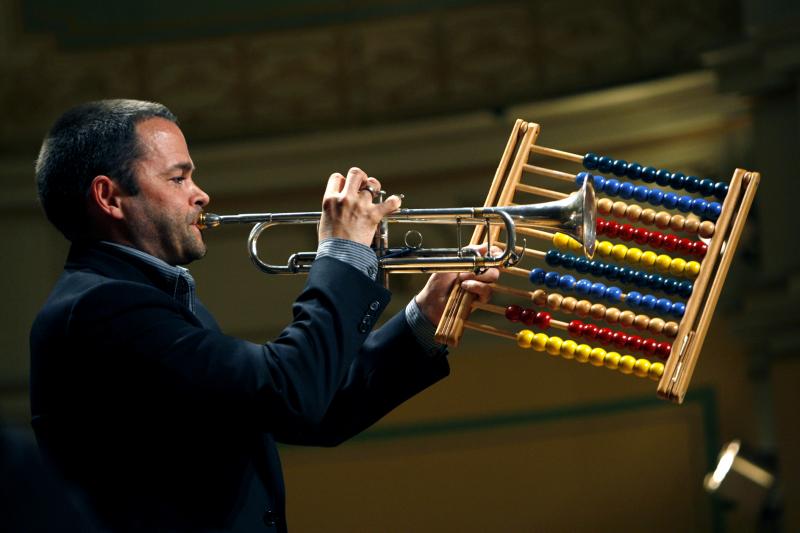
AAJ: Please discuss the creative spark behind your upcoming record.
AH: Chron was a collection of very different compositions or songs which I'd made in the last three or four years. Some are new and some are bit older. It is based on the possibility of recording whenever and wherever you want. With the recording equipment you have today, like laptops, and making recordings of differing qualities—ranging from MP3 to 24-bit—or with Dictaphones, there is now some very advanced recording equipment. One can even buy recording equipment for the iPhone. All these media for recording are very interesting. And I've been thinking of having this momentum of in life regarding music and composing; I can sit anywhere and get ideas by just listening to one sound. This is something Storløkken talked about many years ago. When he was working on a synthetic structure, a single sound or a new sound, that he gradually managed to program, could inspire him to write a new composition.
This is a very interesting way of thinking, and I've been influenced by what he has said. For me, sitting at the restaurant and suddenly hearing an ambulance and a waitress putting a glass on the table—all these daily life sounds with which we are surrounded every day—could be possible inspirations for small sequences of music.
So, very often, I carry with myself small recorders and I can easily record some sound I hear at an airport, on a street. I travel a lot, and I can record various sounds in different places. I collect these sounds and bring them back into my studio. I did a concert in Parma, Italy, and I found this Celeste piano, and while the others were having a sound check, I was backstage recording Celeste sounds. I immediately put the sounds into my computer and made a sequence of Celeste sounds. I could pitch them, I could twist them, I could play Around backwards, or use them as two or three-minute fundamentals. I play these fundamentals in concert, we improvise upon them and I record it and this becomes a new composition for me. You can use all kinds of situations to compose. The speed with which we can compose is really fast. It is a matter of several minutes.
The compositions on Chron were made while on tour. Some of them were recorded in the Studio, based on material recorded live while touring. The second track on Chron was based on a metal installation in a hotel reception in Cologne and the piano was added half a year later on a tour with Supersilent, when I was sitting backstage with a piano. So, Chron is very multilayered record, including the context. There are some tracks where I don't play a trumpet at all—I play an organ, synthesizers or other sounds which I put together like vocals or drums. It has a different approach compared to Cartography. Probably it is closest to Strjon. I think there is a link to that Rune Grammofon material. One of the songs was done in a hotel room in Heidelberg, Germany.
I've just been collecting sounds, and Chron is the result. I think that is a very interesting way of working with music these days and it matches my attitude towards music. It is linked to real-time recording and real-time live and trying to be in it. Of course, I have to mention the importance of Helge Sten, who is the producer. He made the selection, put it together, mixed it and mastered it. He knows my way of music-making and he produced it together nicely. Helge is a "shmecker." I have to point out that he is also the brains behind the records of Supersilent. He is the producer and the elder gentleman. Supersilent is based on the input of all of us, but Helge is the guy producing and putting things together. So, he is very important both for the Supersilent concept and for me with my solo albums, and I'm really proud of our achievements.
Selected Discography
Arve Henriksen, Solidification (Rune Grammofon, 2013)
Supersilent, 11 (Rune Grammofon, 2010)
Supersilent, 10 (Rune Grammofon, 2010)
Supersilent, 9 (Rune Grammofon, 2009)
Arve Henriksen, Cartography (ECM, 2008)
Arve Henriksen, Strjon (Rune Grammofon, 2007)
Supersilent, 8 (Rune Grammofon, 2007)
Supersilent, 7 (Rune Grammofon, 2005)
Arve Henriksen, Chiaroscuro (Rune Grammofon, 2004)
Supersilent, 6 (Rune Grammofon, 2003)
Arve Henriksen, Sakuteiki (Rune Grammofon, 2001)
Supersilent, 5 (Rune Grammofon, 2001)
Supersilent, 4 (Rune Grammofon, 1998)
Supersilent, 1-3 (Rune Grammofon, 1997)
Photo Credit
Page 2 (top): John Kelman
Page 2 (bottom): Klaus Muempfer
All Other Photos: courtesy Arve Henriksen
Tags
Arve Henriksen
Interview
Nenad Georgievski
Norway
Oslo
Nils Petter Molvær
Erik Truffaz
Miles Davis
Supersilent
Led Zeppelin
John Paul Jones
David Sylvian
Christian Wallumrød
Food
Jan Bang
Erik Honore
Farmer's Market
Tord Gustavsen
John Kelman
Comments
PREVIOUS / NEXT
Support All About Jazz
 All About Jazz has been a pillar of jazz since 1995, championing it as an art form and, more importantly, supporting the musicians who make it. Our enduring commitment has made "AAJ" one of the most culturally important websites of its kind, read by hundreds of thousands of fans, musicians and industry figures every month.
All About Jazz has been a pillar of jazz since 1995, championing it as an art form and, more importantly, supporting the musicians who make it. Our enduring commitment has made "AAJ" one of the most culturally important websites of its kind, read by hundreds of thousands of fans, musicians and industry figures every month.



